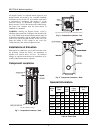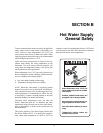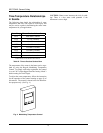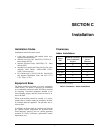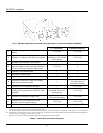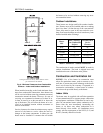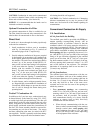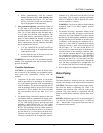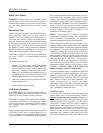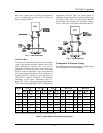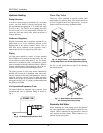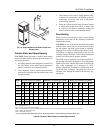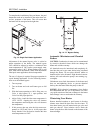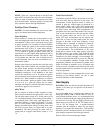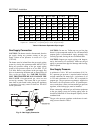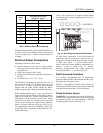
SECTION C: Installation
12
Relief Valve Piping
WARNING: Pressure relief valve discharge piping
must be piped near the floor and close to a drain to
eliminate the potential of severe burns. Do not pipe to
any area where freezing could occur. Refer to local
codes.
Hydrostatic Test
Unlike many types of heaters, this heater does not re-
quire hydrostatic testing prior to being placed in
operation. The heat exchanger has already been fac-
tory-tested and is rated for 160 psi operating pressure.
However, Raypak does recommend hydrostatic testing
of the piping connections to the heater and the rest of
the system prior to operation. This is particularly true
for hydronic systems using glycol-based antifreeze.
Raypak recommends conducting the hydrostatic test
before connecting gas piping or electrical supply.
Leaks must be repaired at once to prevent damage to
the heater. NEVER use petroleum-based stop-leak
compounds.
To perform hydrostatic test:
1. Connect fill water supply. With field-installed
bleed valve open, fill heater with water. When wa-
ter flows from bleed valve, shut off water. Close
bleed valve. Carefully fill the rest of the system,
making sure to eliminate any entrapped air by us-
ing high-point air vents. Close feed valve. Test at
standard operating pressure for at least 24 hours.
2. Make sure constant gauge pressure has been main-
tained throughout test.
3. Check for leaks. Repair if found.
Cold Water Operation
CAUTION: Damage due to internal condensation may
occur if the heater inlet water temperature does not
exceed 120˚F (49ºC) within 7 minutes of start-up.
This heater is equipped with a proprietary condensate
evaporation system which will evaporate any conden-
sate that may begin to accumulate inside the primary
heat exchanger with water temperatures as low as
120ºF (49ºC).
Heaters operated with an inlet temperature of less than
120ºF (49ºC) MUST have a manual bypass (see Fig.
14) or an approved low-temperature operation system
to prevent problems with condensation. This piping is
like a primary/secondary boiler installation with a by-
pass acting as the secondary boiler piping. Raypak
strongly recommends that thermometer(s) be placed
into the heater piping next to the in/out header to facili-
tate temperature adjustment. Inlet water temperatures
below 120ºF (49ºC) can excessively cool the products
of combustion, resulting in collection of condensate in
the heat exchanger area beyond the capacity of the
condensate evaporation system.
NOTE: Vent piping MUST contain a condensate
drain which is installed according to the vent manufac-
turer’s instructions and plumbed to an appropriate
condensate management system (field supplied).
Failure to reach or exceed 120ºF (49ºC) within 7 min-
utes may damage or cause failure of the heat exchanger,
combustion chamber, or other parts within the combus-
tion chamber. It can cause operational problems, bad
combustion, sooting, flue gas leakage and reduced ser-
vice life of the vent system. A bypass allows part of the
heater discharge water to be mixed with the cooler wa-
ter returning to the heater inlet to increase the heater
inlet temperature above 120ºF (49ºC). This precaution-
ary measure should prevent the products of combustion
from condensing beyond the ability of the condensate
management system employed in this heater in most
installations. Warranty claims will be denied for
damage or failures caused by condensation.
Cold water operation issues are applicable to both cold
water start and cold water run applications. Cold water
operation for 7 minutes or less on initial daily start-up
is acceptable. Where cold water starts will last longer
than 7 minutes or where cold water operation is con-
tinuous, provisions must be made to mix higher
temperature outlet water with the colder inlet water and
thereby raise the inlet temperature to at least 120ºF
(49ºC) within the 7-minute time limit.
Cold Water Starts
Cold water starts, wherein the inlet water temperature
remains below 120ºF (49ºC) for more than 7 minutes,
must
have cold water start protection. Known pro-
tection methods consist of mixing heated outlet water
with the inlet water with a bypass to raise the inlet to
120ºF (49ºC) or higher. Once the system is heated up
and has return water temperatures of 120ºF (49ºC) or
higher, the mixing of outlet water with inlet water is no
longer needed and the bypass can be shut off. If the
bypass is not shut off as the system heats up, the outlet
temperature may continue to climb and trip the high
limit, thereby shutting down the heater. Thus an auto-



